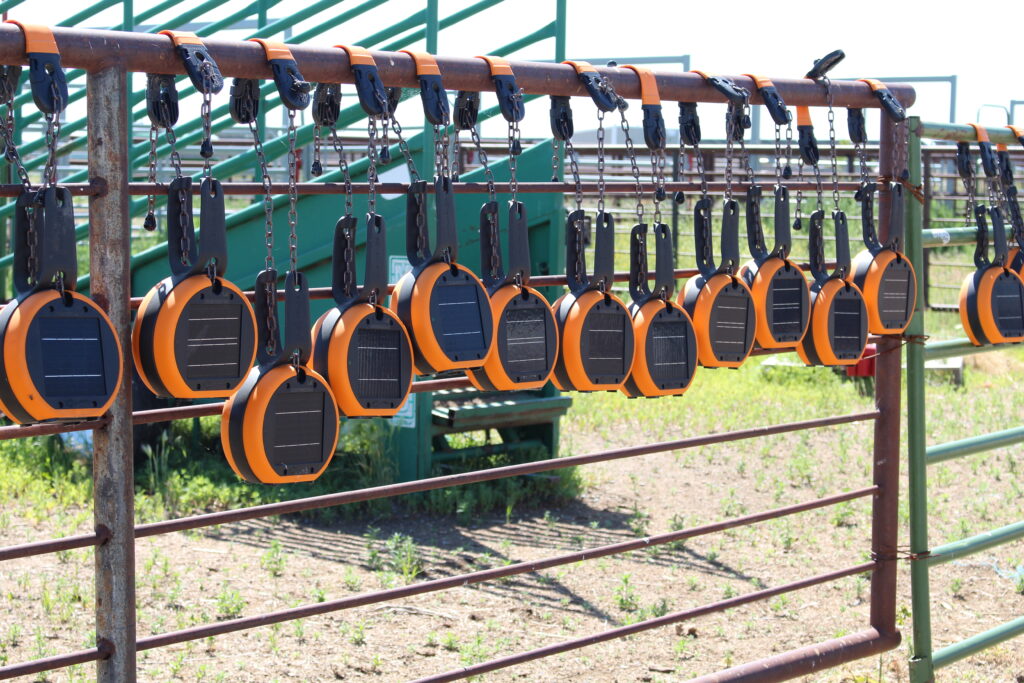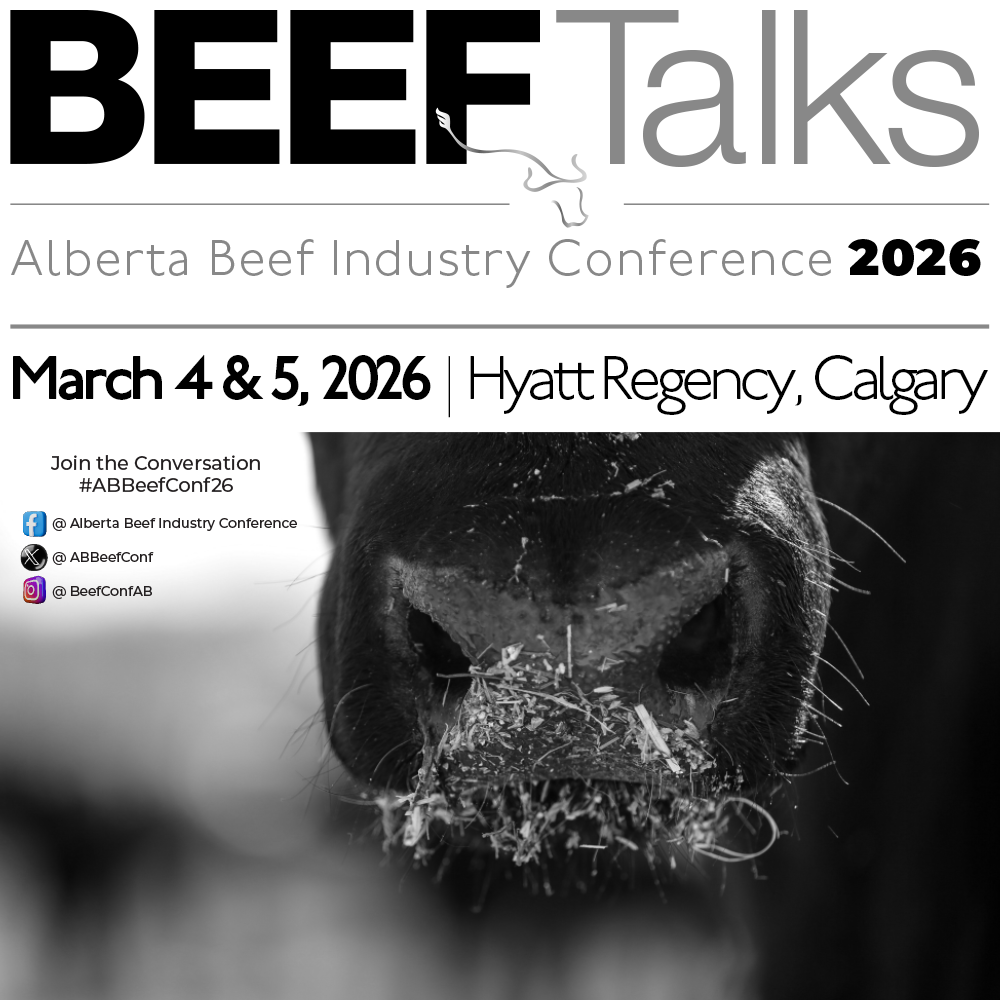AB Direct - Steers
Rail: 492.00-493.50 FOB feedlot (last week)
AB Direct - Heifers
Rail: 492.00-493.50 FOB feedlot (last week)
US Trade- Steers
Rail: 355.00-363.00 (IA, NE) last week
US Trade - Heifers
Rail: 355.00-363.00 (IA, NE) last week
Canadian Dollar
0.19

Riverview Ranch explores virtual fencing
It is slightly cooler in the shop compared to the 30 degrees outside, and a huge laminated map on the wall provides an impressive, detailed overview of the Riverview Ranch grazing plan. It is nothing compared to the stunning panorama of native shortgrass prairie, shallow snaking coulees and steep blocky cliffs framing the Old Man River just outside the door. We are talking virtual fencing, and Tyler Torrie is excited. A map in real-time on his cell phone shows bulls in a paddock equipped with collars from eShepherd, Gallagher’s Virtual Fence technology. The bulls learned to respect the virtual boundaries quickly and with no major glitches. More collars hang along the corral fence charging in the sun soon to be fitted on replacement heifers.

Assessing the current condition of the land, setting goals, developing strategies, and implementing a grazing plan will improve forage production and maintain or improve environmental sustainability. An advanced grazing system (AGS) uses rotational grazing practices adapted to the landscape. A grazing plan with AGS considers rest period, graze time, animal impact, stock density, soil health and biodiversity. Water access and fencing are major factors used to control the movement of animals across the landscape and determine the size and shape of paddocks.
A notable innovation in pasture management is virtual fencing which controls the distribution and movement of livestock without physical barriers. Livestock are fitted with GPS equipped collars that keep the animal in a pre-determined area using a series of auditory ques and electric shock. Virtual fencing creates small, manageable grazing areas to enable rotational grazing practices and improve overall pasture use. This technology significantly reduces the labour required to erect and disassemble temporary electric fencing. In addition, virtual fencing allows for endless possibilities of paddock design and adaptability mid-season. The ability to create exclusion zones within a paddock can keep livestock away from ecologically sensitive areas like sage grouse leks or sandy blowouts.
On the map, Tyler points out the 7 miles of riverfront slopes that are not feasible to fence. Coulees riddle the pasture and restrict paddock design. Out touring the pasture, I see the advantage to fencing off the roadway virtually, both to protect the animals and as an alternative to Texas gates that dislodge and slump with traffic on the sandy base. Tyler feels the virtual fence will resolve his concerns around livestock access to the sensitive sturgeon spawning grounds and wildlife getting caught in or clipping the cross-fence wires.
There are challenges to using new technology and costs to implement it. While it is still relatively new to producers in Canada, there is great tech support offered from the virtual fence companies. Funding is available from the Canadian Forage and Grassland Association through Agriculture and Agri-Food Canada’s Agricultural Climate Solutions – On-Farm Climate Action Fund. Virtual fencing offers a promising approach for livestock grazing management in the prairies and the potential benefits make it an innovation worth exploring.
This article originally appeared in The Blade—the official publication of the Central Alberta Forage and Livestock Association (CAFLA). Featuring stories, insights, and on-farm innovations from across Central Alberta, The Blade keeps you connected to the latest in forage and livestock practices. Read the latest issue and learn how to become a CAFLA member at cafla-ab.ca.

